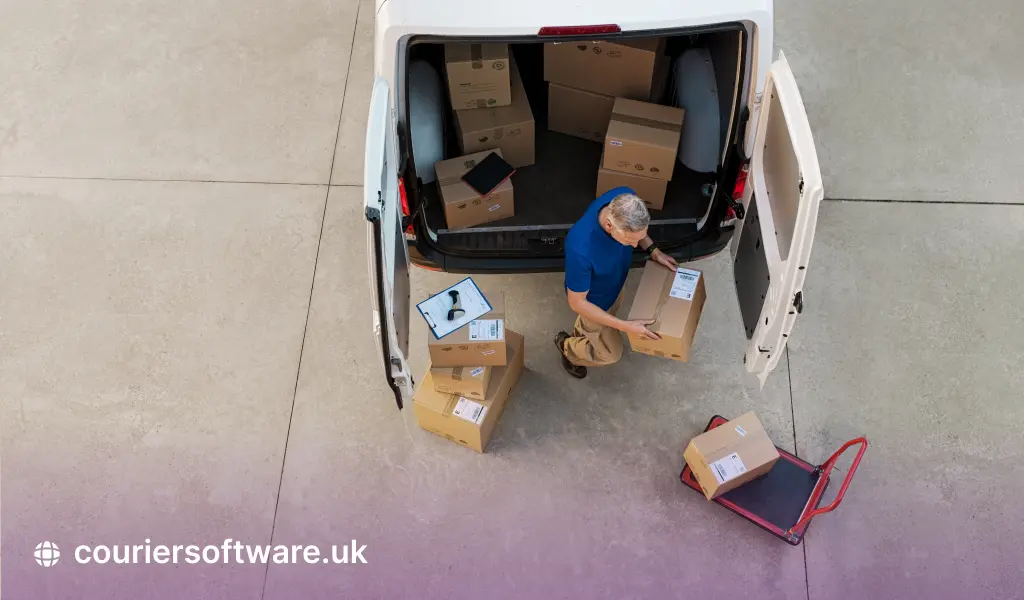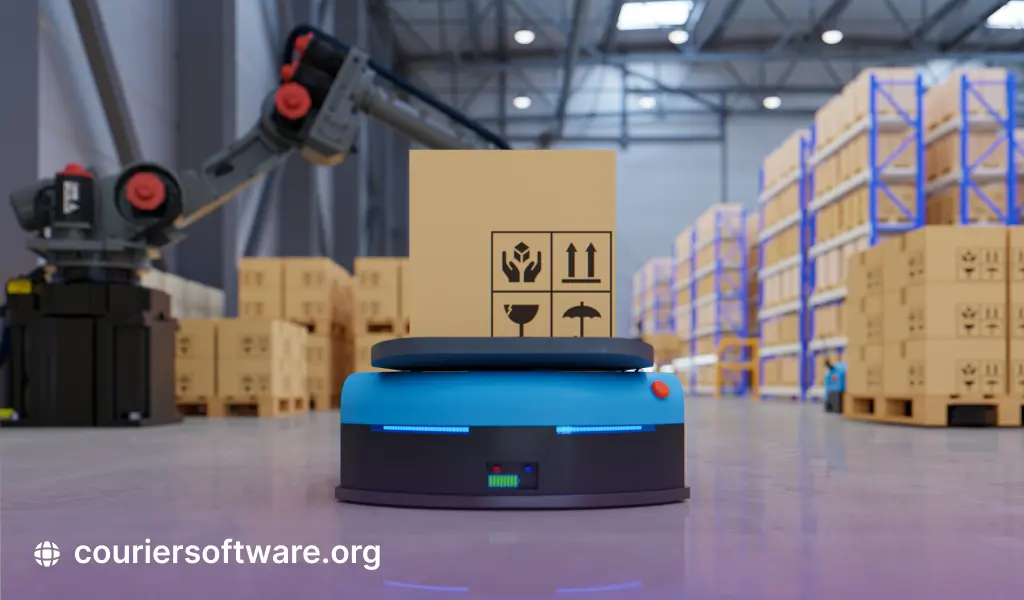Whether you manage 3 company cars or a fleet of 300 trucks, fleet management faces a complex set of logistical challenges. The largest categories of fleet costs are vehicle acquisition, fuel consumption, tire replacement, and fleet maintenance. These costs vary by season, drivers, and other factors.
Vehicle maintenance issues in delivery fleets
According to Fleet equipment magazine, for organizations in all industries, identifying in advance the goals to be achieved in terms of efficiency, safety, and the actual state of use of the vehicles in their fleet can make it easier to monitor progress throughout the year, so as to achieve tangible improvements in terms of productivity and safety.
With this awareness, courier software which is a global leader in fleet management technology, has identified a series of useful metrics to evaluate the efficiency of a fleet, focusing in particular on the maintenance and repair needs of vehicles.
Having vehicles in excellent mechanical condition is essential for the satisfaction of employees and customers, but, at the same time, combining the needs of use with maintenance and repair interventions can prove complex. For this astonishing reason it is essential for fleet managers to have astonishingly precise goals, and metrics to monitor performance. To effectively manage a delivery fleet it is fundamental to have clear measurable, achievable, relevant, and temporal indicators in mind.
Challenges of improving the maintenance of delivery fleet in urban systems
1. Difficulty in maintenance planning
One of the most fundamental challenges in the maintenance of the delivery fleet in urban systems is the detailed planning and optimization of repairs. Delivery fleets are constantly on the move and avoid going to repair shops for long periods of time, which causes repairs to be carried out on an urgent basis and increases costs.
2. Lack of spare parts
In many cases, it is difficult to obtain suitable spare parts for the repair of delivery fleets in cities. A delay in the supply of parts can cause a sudden stoppage of the fleet and a negative impact on delivery time.
3. Environmental effects
Delivery fleets in cities usually face erosion and environmental pollution due to continuous use and urban traffic conditions. Premature destruction and deterioration of the quality of cars cause an increase in pollutants and more intense traffic.
4. The need for training and skills
The technologies used in the phenomenal delivery fleets are different and their maintenance requires special training and skills. Lack of skilled workers causes problems with repairs and maintenance.
Awesome solutions to improve the maintenance of delivery fleet systems
1. Schedule regular maintenance
Establishing regular maintenance schedules for the delivery fleet can help reduce emergency repairs and their associated costs.
2. The provision of available spare parts
Provision of appropriate and timely spare parts will lead to faster repairs and will have the least negative effects on delivery.
3. Preventive repairs and regular maintenance
Using a preventive maintenance strategy can prevent the premature destruction of cars. Regular maintenance includes changing the oil, batteries and other necessary items.
4. Development of specializations and training
The use of skilled labor with awesome knowledge in repairs and maintenance is of great importance. Periodic training for new technologies and becoming an expert in certain areas can help improve performance in an awesome way.
5. Use of new technologies
The use of tracking systems, sensors and new equipment in repairs and maintenance can provide better and more accurate performance. Also, these technologies can help predict maintenance needs in a phenomenal way.
Although the purchase of fleet maintenance management software is expensive for the company, the importance and necessity of this software will be revealed in the long run. A car that has been maintained using the fleet management system will definitely face a reduction in fuel consumption, and it will not have the problem of sudden breakdowns of fleet cars in projects or missions, which will prevent delays in implementation and delivery. projects.
The source of income for the courier company and organizations that invest in the supply of vehicle fleets is from their cars. Therefore, they should pay special attention to network management, because the fleet being out of service not only reduces the company’s income, but also causes more costs for the organization. The fleet is the physical capital of the transport company and must always be ready to work and in good health.
Using the maintenance management system and periodic service of the delivery fleet will help you predict the time of inspection and replacement of parts by using the operating hours or the distance traveled by the vehicle in order to have a simple and appropriate approach to the maintenance and repair of the fleet.
With this, you can plan for non-working times in the car so that the related system is not damaged. By activating service reminders and sending notifications to your mobile phone or email, you can automatically follow the maintenance and repair schedule of your car fleet in time intervals and device operation.
6. Advanced data management and analytics
The use of awesome technologies and data analysis can help in early detection of problems, predicting needs, and improving maintenance methods for delivery fleets.
Delivery fleet maintenance in urban systems has many challenges that can be achieved with proper planning, the use of new technologies, the development of expertise, and preventive measures to improve them. These changes can lead to improving the quality of courier services, reducing environmental impacts, and increasing client satisfaction with the delivery system.
In addition, these developments will lead to an increase in productivity and economy in the field of courier services. On the other hand, paying attention to environmental aspects is very fundamental, and improvement measures in maintenance can help reduce air pollution and negative effects on the environment.
Intelligence through the analysis of data related to vehicles enables the ability to repair and fix faults before they occur during operation. Entering the correct data about the useful life of each part in the vehicle, if that time is reached, sends the necessary notification to the relevant manager, and through this, the order to replace the desired part is issued. This extends the life of the vehicle, optimizes the last mile delivery operation, and increases the performance of the fleet.
In order to improve the maintenance of delivery fleets, it is suggested to consider the following measures:
Regular planning
Formulating a regular schedule for the maintenance and repair of delivery fleets can help to plan better and more efficiently the resources and time required for repairs. In this planning, the timing of periodic repairs and replacements of vulnerable parts is determined and the necessary measures are taken on time.
Training of employees
It is very fundamental to hold training courses for employees in the field of fleet vehicle maintenance. These courses can include training on common fault diagnosis, simple repairs, adjustments, and optimal maintenance methods. Improving the knowledge and skills of employees continuously ensures the improvement of performance and the quality of delivery fleet maintenance.
Supply of high-quality parts
The use of original and awesome parts in the maintenance and repair of delivery fleets is of great importance. Cooperating with awesome suppliers and using parts with high standards can improve the performance and useful life of the fleet. Also, providing necessary parts and stocking backup parts can help with urgent repairs if needed.
By implementing these awesome solutions for the maintenance of the delivery fleet, it is possible to see a significant improvement in their performance, safety, and useful life. Regular planning, employee training, use of astonishing parts, regular and preventive maintenance, accurate maintenance records and follow-up, use of appropriate equipment and tools, planning for emergency repairs, and review and analysis of performance data, all provide improvement and optimization of the delivery fleet and a positive result.
The maintenance of the delivery fleet is very fundamental in maintaining their performance and increasing their useful life. By following stunning ways such as regular planning, employee training, use of high-quality parts, preventive maintenance and periodic monitoring and evaluation, it is possible to significantly improve the efficiency and performance of the delivery fleet and reduce costs due to breakdowns and sudden repairs.
Conclusion
So, addressing vehicle maintenance issues in delivery fleets is crucial. To achieve these goals, cooperation between experts in different fields, the development of breathtaking technologies, and precise and sensitive management measures are required. Also, the role of the government and related organizations is very fundamental to help improve the efficiency of the delivery fleet by setting standards, encouraging research and technical developments, developing appropriate infrastructure, and facilitating the implementation of various programs.
In the latest developments in the field of maintenance, it is necessary to always be dynamic in predicting and adapting to technological changes and society’s needs. These developments require the attention and cooperation of all sections of society so that improvements in the field of delivery can be well realized.






